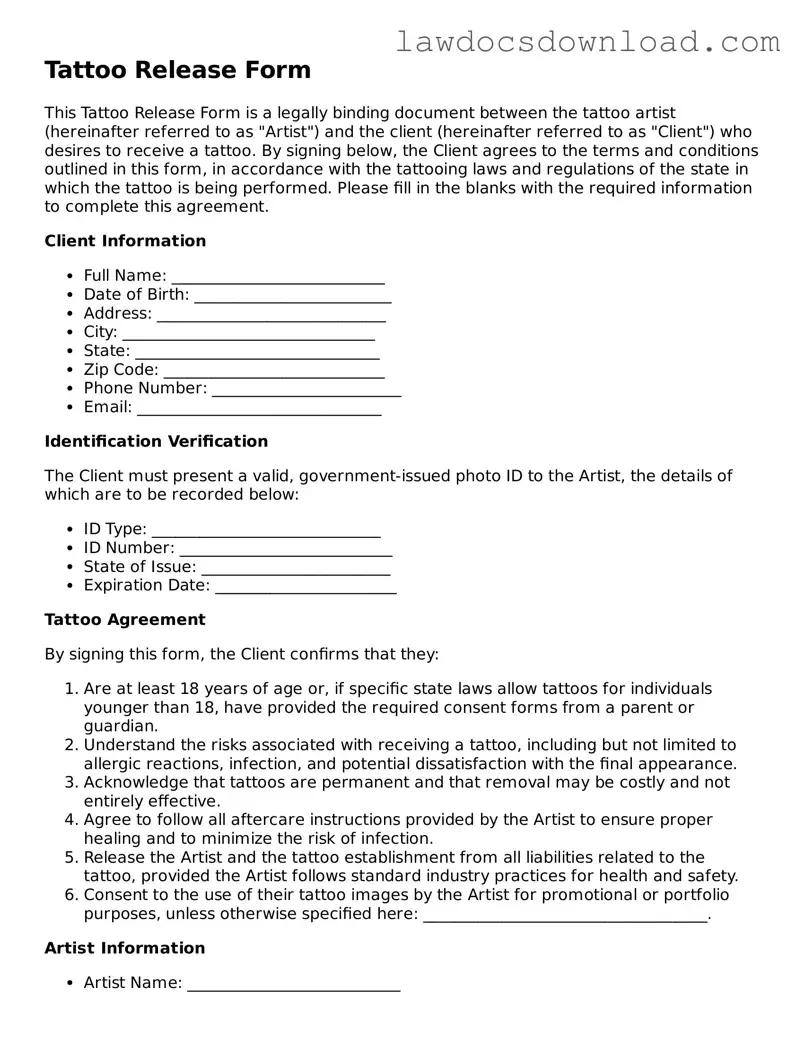When it comes to getting a tattoo, the excitement can sometimes overshadow the importance of properly filling out the tattoo release form. This document is not just a routine procedure; it is a legal agreement between the artist and the client that outlines certain responsibilities and acknowledgments. A common mistake is not reading the document thoroughly. In the rush to get inked, many skim over the text, missing key details about the care and risks associated with their new tattoo. This oversight can lead to misunderstandings about aftercare or dissatisfaction with the final result.
Another error is providing incomplete or inaccurate personal information. The release form often requires contact details, identification, and possibly health information to ensure the safety and appropriateness of the tattoo procedure. Failing to provide correct details can lead to complications, especially if allergic reactions or other health concerns arise post-tattoo. It is crucial to be honest and complete when disclosing personal information.
Not considering the implications of acknowledging health statements is also a slip-up. The form may ask clients to confirm that they are not under the influence of alcohol or drugs and do not have health conditions that could influence the tattooing process, like blood clotting disorders. Overlooking these statements can not only endanger the client's health but also put the tattoo artist at risk.
Ignoring the consent and release of liability section is a serious mistake. This part of the form is designed to clarify that the client understands the inherent risks of getting a tattoo and agrees not to hold the artist or the studio liable for certain outcomes. By not fully understanding this section, clients may harbor unrealistic expectations or misunderstanding about the responsibilities of the tattoo artist.
Many also make the error of not asking questions about any part of the form they do not understand. Clients might feel rushed or embarrassed to ask for clarification, leading to assumptions that can affect their satisfaction with the service or their rights in case of an adverse reaction or infection.
Failing to review the details of the design and placement as agreed upon before signing the form is another common oversight. This section is crucial to ensuring that the client and the tattoo artist are in agreement about what is to be done. Mistakes in articulating the desired outcome can be difficult, if not impossible, to rectify after the work has begun.
Lastly, many neglect to keep a copy of the signed form for their records. This document is an important piece of legal evidence that outlines the agreement between the client and the artist. Having a copy can be essential if there are any disputes or concerns that arise after the procedure is completed.
Understanding and avoiding these mistakes when filling out a tattoo release form can lead to a much smoother and satisfactory tattooing experience. It's about protecting oneself, as much as it is about respecting the art form and its practitioners.
